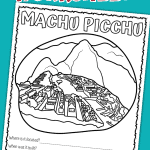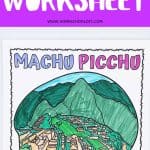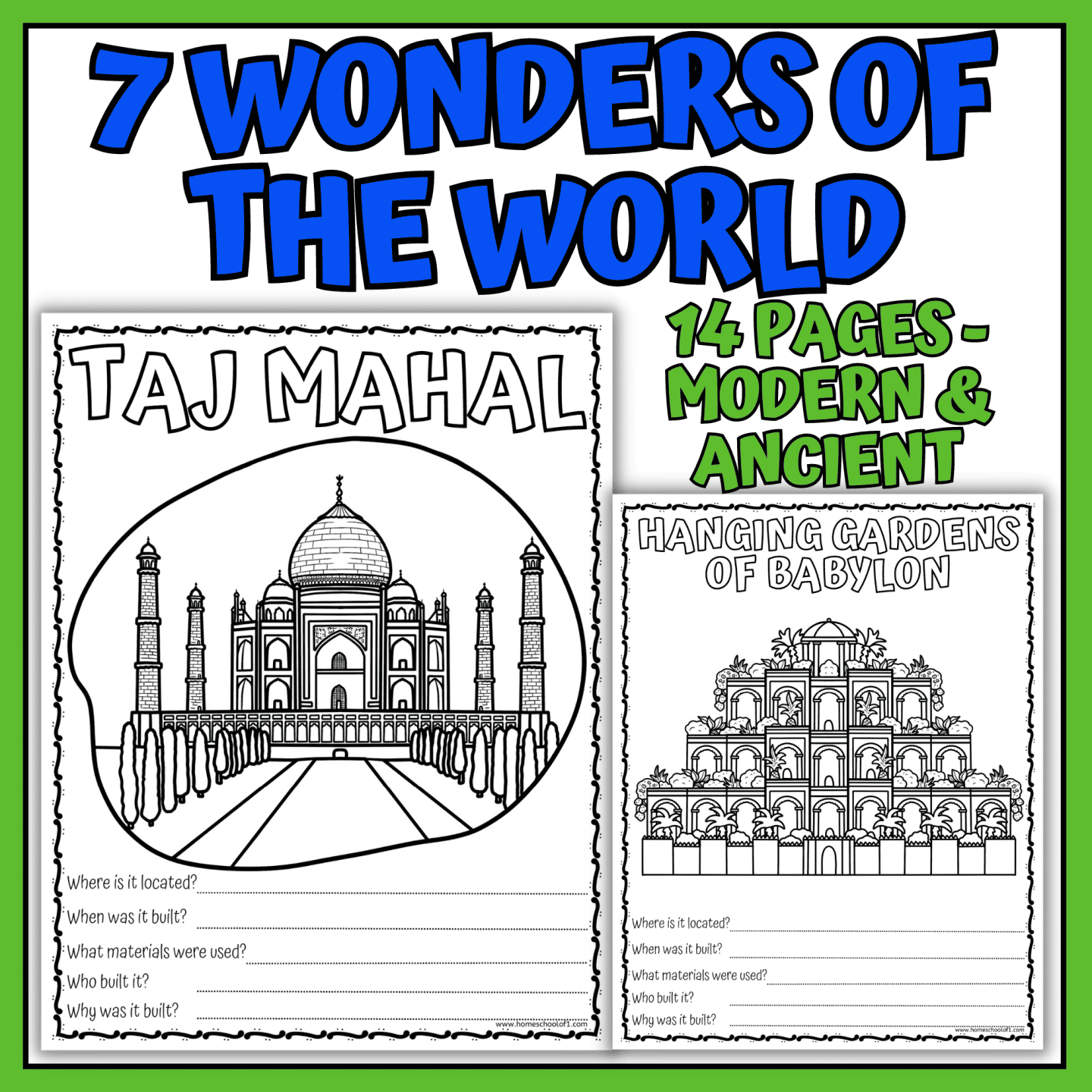Machu Picchu Worksheet & Fun Facts for Kids
A Machu Picchu worksheet is a great way to help kids explore the history and mystery of one of the most iconic sites in South America.
This free geography printable introduces young learners to the fascinating world of the Inca Empire, blending history, culture, and geography into one hands-on activity.
Whether you’re studying ancient civilizations or just want to spark curiosity about world landmarks, this worksheet makes it easy to learn through coloring and simple research.
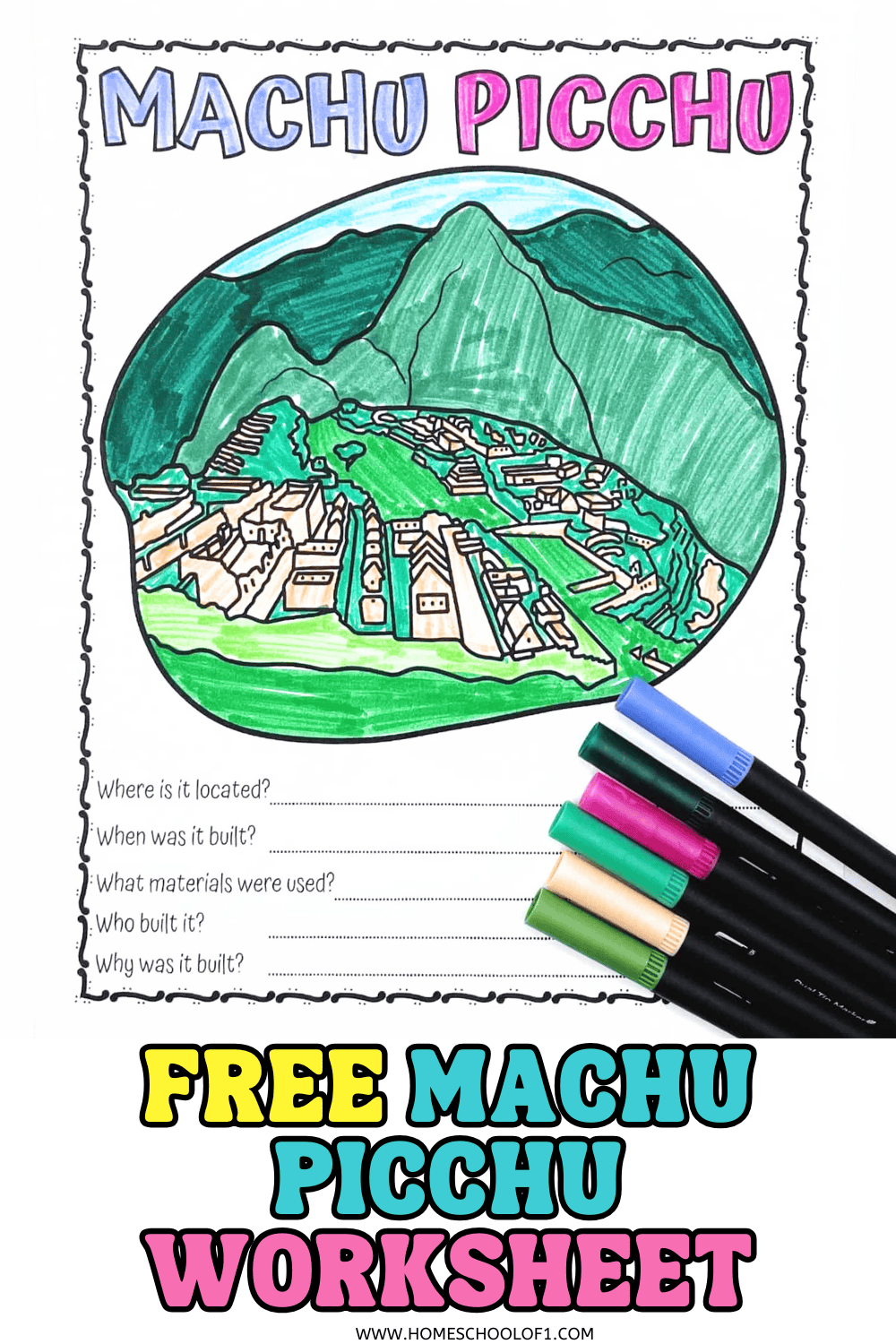
**This post may contain affiliate links. As an Amazon Associate and a participant in other affiliate programs, I earn a commission on qualifying purchases.**
Machu Picchu facts for kids
- Machu Picchu is an ancient Incan city located high up in the Andes Mountains of Peru. It was built around 600 years ago but remained hidden from the outside world until it was rediscovered in 1911.
- Llamas can be seen roaming freely around Machu Picchu. They are friendly and often pose for pictures with visitors.
- The Incas built Machu Picchu using massive stone blocks without using any mortar. These stones were carefully cut and fitted together like a giant puzzle.
- Machu Picchu was built with careful alignment to the stars and astronomical events. The Incas were skilled astronomers. And they used the structures in Machu Picchu to study the movements of the sun, moon, and stars.
- The Incas didn’t use wheels to transport the huge stones used in Machu Picchu. Instead, they used ramps, levers, and human power to move and lift the stones into place.
- Machu Picchu is located at a very high altitude, about 2,430 meters (7,970 feet) above sea level.
- Despite being located in a region prone to earthquakes, Machu Picchu has withstood many tremors over the centuries. The precise construction of the stone structures, without the use of mortar. Allows the buildings to flex during earthquakes and remain intact.
- Machu Picchu is recognized as a UNESCO World Heritage Site, which means it is considered an important part of human history and culture.
Want to learn more about this continent? Check out our free South America geography worksheets.
Machu Picchu research worksheet
This hands-on Machu Picchu research worksheet gives kids a chance to learn about one of the world’s most fascinating ancient cities.
As they color and explore, they’ll uncover key facts about its history, purpose, and the Inca civilization that built it.
Use this page to spark curiosity and guide students through a simple, fun geography activity.
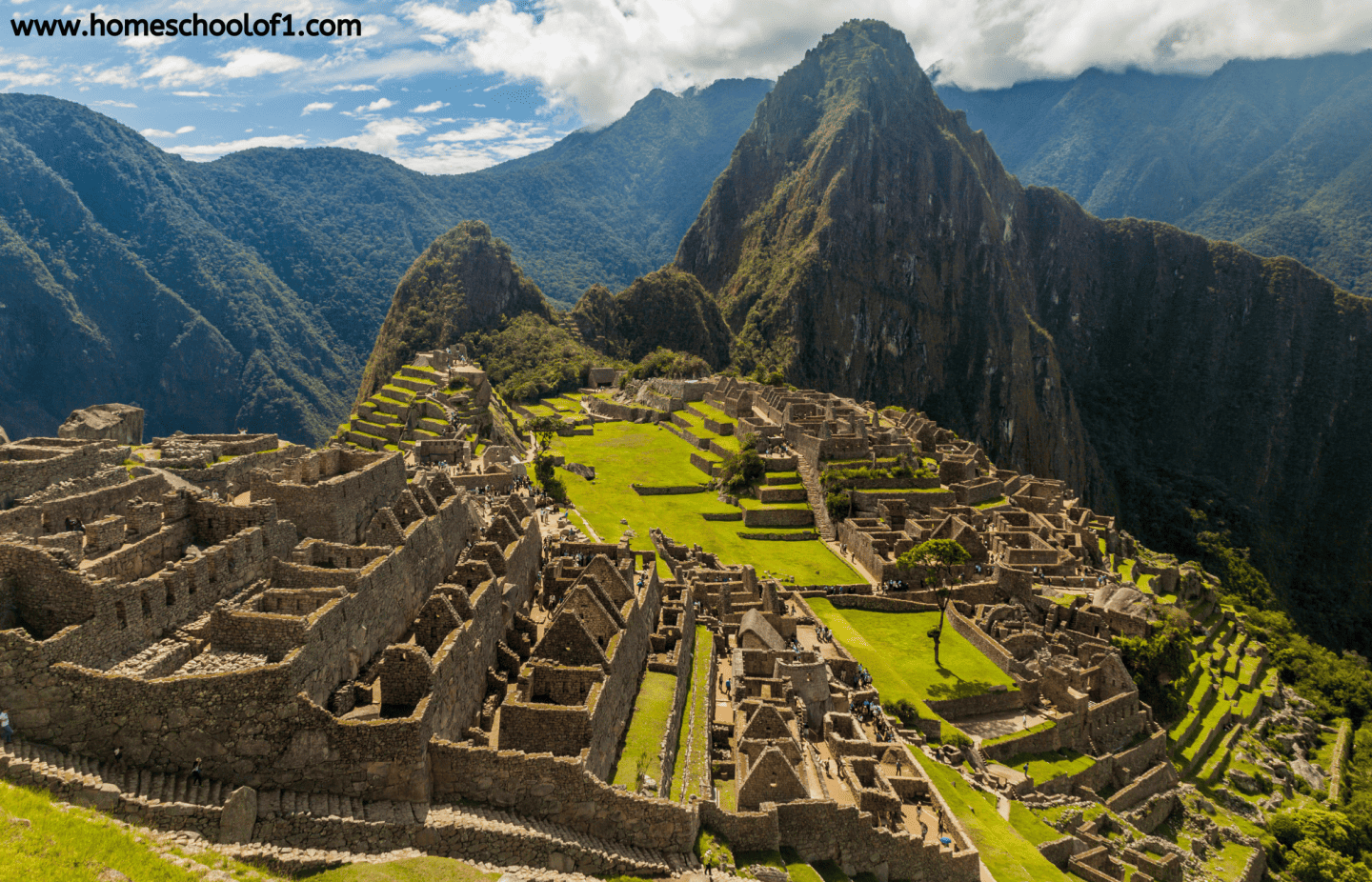
These are the questions the kids will need to answer on the Machu Picchu worksheet:
Where is it located?
Machu Picchu is located in the Andes Mountains of Peru, in South America.
When was it built?
Machu Picchu was built around 600 years ago, in the 15th century. More specifically, it is believed to have been constructed around the year 1450.
What materials were used in making it?
The main building material used in constructing Machu Picchu was stone. The Incas cut and shaped large stone blocks, fitting them together precisely without using mortar. The stones were quarried from nearby mountains and brought to the site.
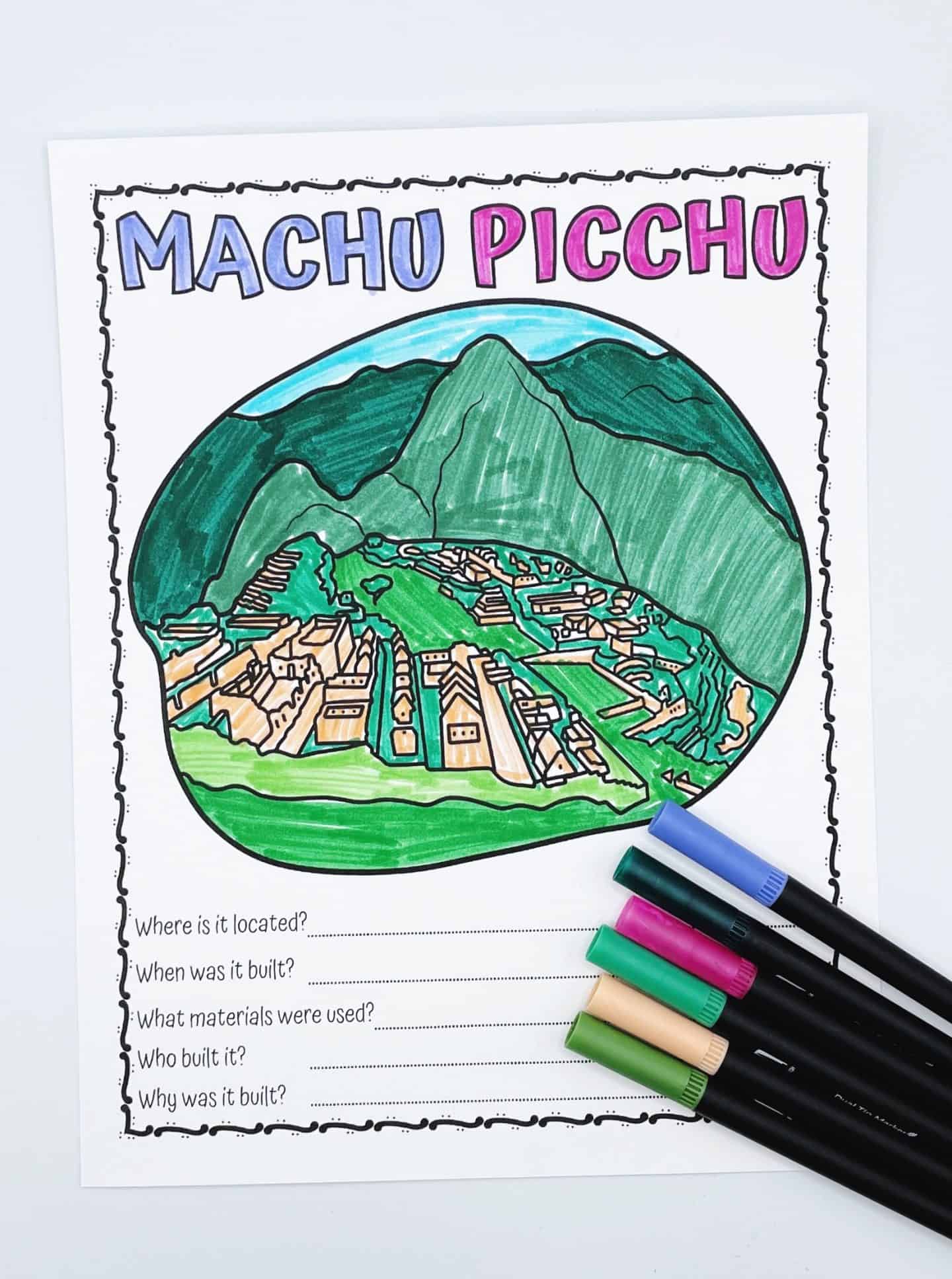
Who built it?
Machu Picchu was built by the ancient Inca civilization. The Inca people were skilled engineers and architects who constructed impressive structures throughout their empire, including Machu Picchu.
Why was it built?
The exact purpose of Machu Picchu is not known for certain, as the Incas did not leave behind written records. However, it is believed to have served as a royal estate and religious center for the Inca emperor Pachacuti and his elite circle.
It may have also had agricultural functions and served as a retreat or sanctuary for the ruling class. Some theories suggest it was a strategic military outpost or a place of pilgrimage.
Books about Machu Picchu for kids
These books are a great way to dig deeper into the history and mystery of Machu Picchu:
Where is Machu Picchu? introduces young readers to the ancient city through engaging storytelling and colorful illustrations. It’s an easy and accessible overview for kids just starting to learn about world landmarks.
Turn Right at Macchu Picchu reads like a real-life adventure. Author Mark Adams retraces explorer Hiram Bingham’s journey in a fun and fascinating way—perfect for older kids or curious parents.
Lost City: The Discovery of Machu Picchu is beautifully illustrated and tells the true story of how Machu Picchu was found. It’s ideal for kids who enjoy stories that mix history with exploration.
Get the free printable Machu Picchu worksheet here!
If you’re exploring the wonders of the world, you can grab all 14 worksheets—covering both the new and ancient wonders—in one easy printable pack for a small fee.
If you don’t see the form below, click here to get the free Machu Picchu coloring page.
Additional South America worksheets
Last Updated on 23 October 2025 by Clare Brown

